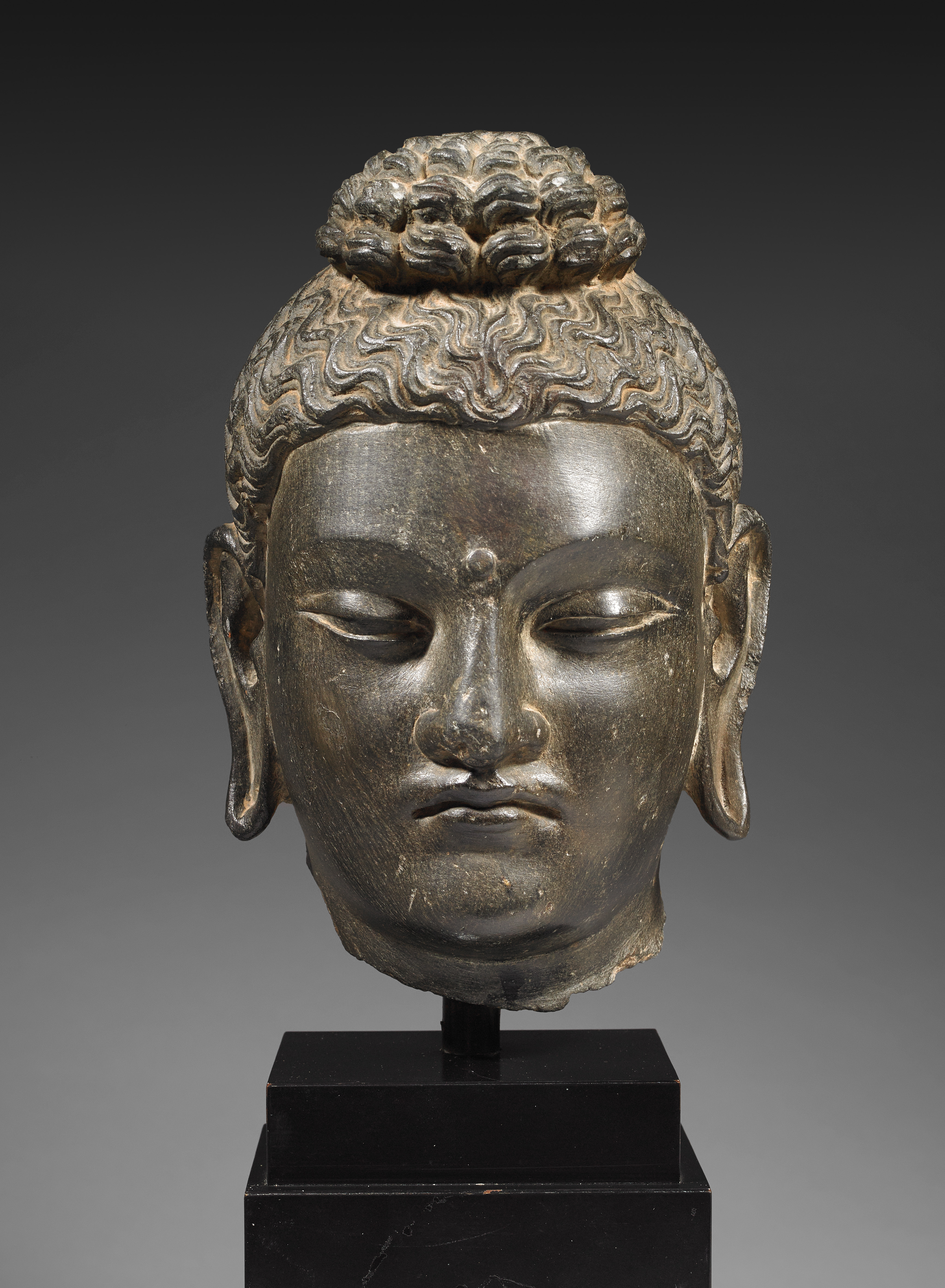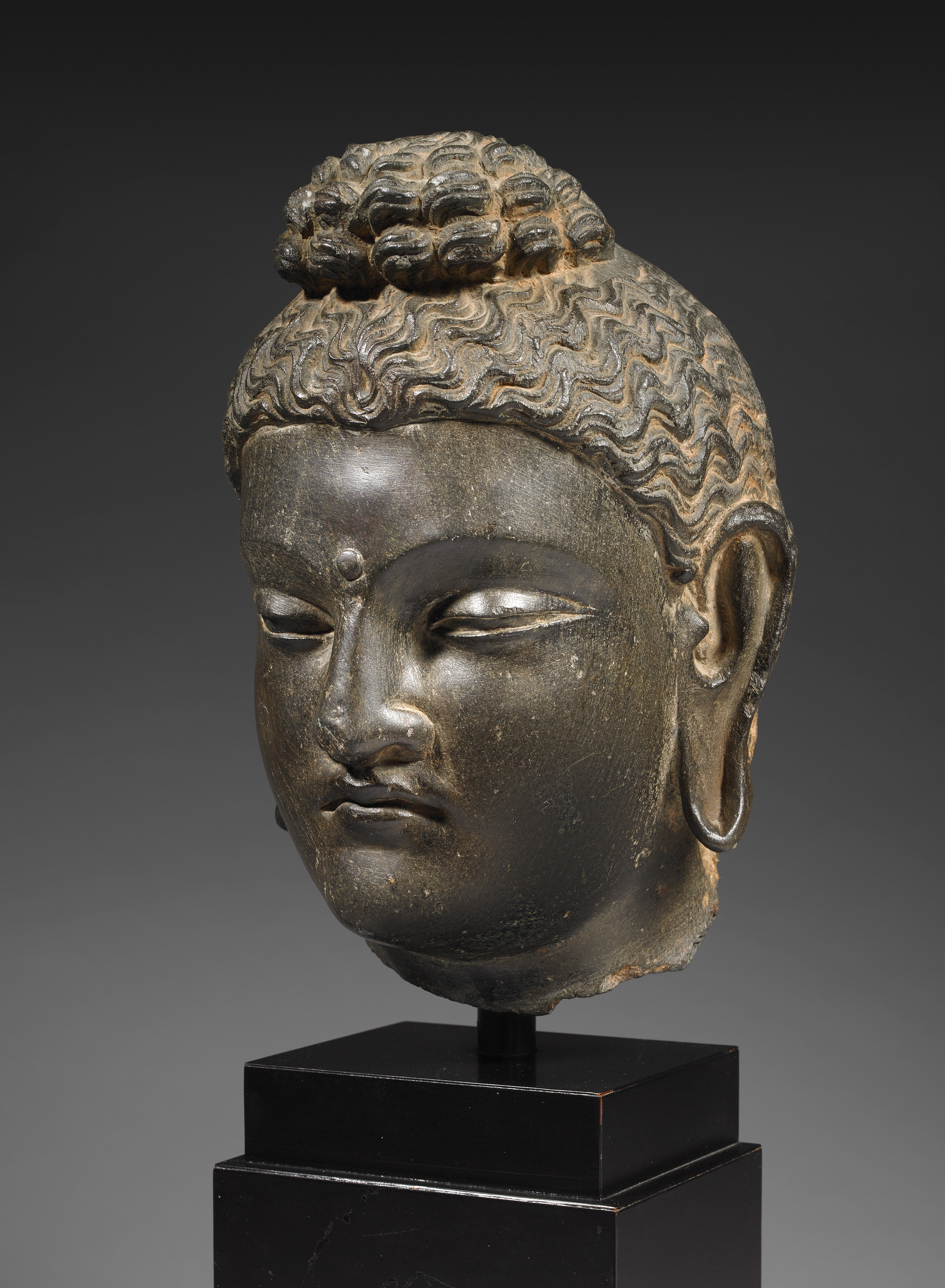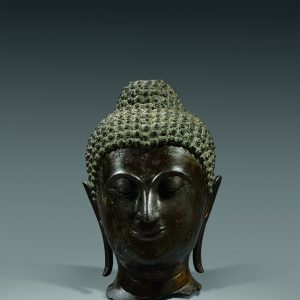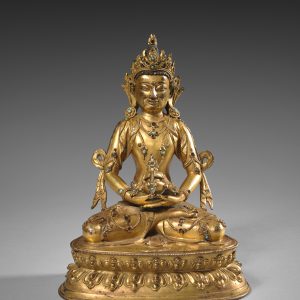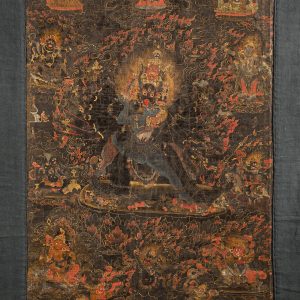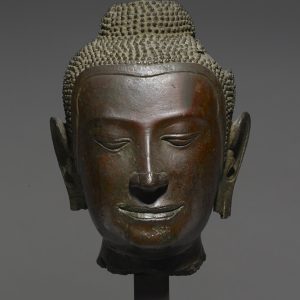Head of Buddha
Schist
Ancient region of Gandhāra (Northern Pakistan)
3rd – 4th century
H. 21 cm
Description
The Gandhāra Valley and its extensive surrounding territories are the cradle of an original art style largely inspired by Helleno-Roman and Parthian art, adapted for Indian religions, almost exclusively Buddhism. In discussing its origins, we must go back to the adventures of Alexander the Great in Central Asia, up to the very gates of India (330-326 B.C.E.) and to the founding of Greek colonies such as Ai-Khanoum on the Oxus (Amu Darya), located on the modern border between Afghanistan and Tajikistan. The caravan trade helped spread Western influences, even if the genesis of the synthetic art of these regions retains some obscure aspects. It developed over a vast area, from the Muslim republics of Central Asia up to the north of Pakistan. Many regional styles co-exist. Documentation from the 1st century B.C.E. is rare and inconclusive. The apogee of this art, formerly called “Greco-Buddhist” art, an incorrect but image-evoking description, dates from the 2nd or 3rd century of our era. Beautiful works were created one after the other until Islam arrived at a point in time that varies depending on the region concerned.
This head shows two explicit signs of a Buddhist link: the small whorl of hair on the lower forehead (urna), most often represented by a small flat dot, and a cranial knob (uṣṇīṣa) at the top of the skull, hidden here by curly hair pulled back loosely like a chignon. This large, relatively flat uṣṇīṣa can be seen on a preaching Buddha in the Loo Gallery (Saunders, 1986, pl. XII). The hair falls in curls rather than being held in a topknot, and can be compared to that of a head in the Kabul Museum (Darbois-Tissot, 2002, p. 91).
The pierced ears, distended from wearing heavy earrings, indicate the former princehood of the Blessed One. The half-closed eyes reflect the intensity of his meditation.
The expression on his mouth, which could be misinterpreted as haughty, is also found on two heads in the British Museum (Inv. No. OA 1929. 11-4.2 and OA 1902. 5-20.3. Zwalf, 1996, Vol. 2, p. 32 and 33, fig. 39 and 40). The somewhat chubby aspect of the face may have been influenced by Gupta India (4th-6th c) and would tend to date this head from the 4th century.
The work is particularly polished, which would indicate it is a purely Gandharian production. The black color of the stone and its perfect sheen are reminiscent of certain Roman statues of Late Antiquity. These characteristics can be found in a head from Sahri Bahlol, conserved at the Lahore Museum (inv. No. PM 2860. Cambon, 2010, p. 141, No. 68), in another recently presented on the British market (Ray, 2014, No. 1) and yet another in the Norton Simon Museum of Pasadena (Pal, 2003, p. 52, No. 20).
Provenance: Private collection, acquired from Hartman Rare Art, NY, 1984.
Art Loss Register Certificate, ref. S0010696.
- Cambon Pierre et alii, Pakistan Terre de rencontre Ser-VI e siècle . Les arts du Gandhara. Paris : RMN, 2010.
- Darbois, Dominique–Tissot, Francine, Kaboul le passé confisqué. Paris : Paris musées –Suilly la Tour : Ed. Findakly, 2002.
- Saunders, Ernest Dale, Mudras. Princeton : princeton University Press, 1985.
- Pal, Pratapaditya, Asian Art at Norton Simon Museum. Yale: Yale University Press, Vol. 1, 2003.
- Zwalf, Wladimir, A catalogue of the Gandhāra Sculpture in the British Museum (2 vol.). Londres: British Museum Press, 1996.

